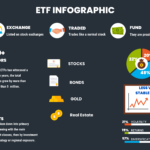- Accessibility: Passive investing typically requires lower initial investment amounts compared to active investing, which often requires larger sums of money to buy individual stocks or other securities. This makes passive investing more accessible to a wider range of investors, including those with limited financial resources. With lower barriers to entry, passive investing can allow more people to participate in wealth-building through investing.
- Cost-Effectiveness: Passive investing typically involves lower fees compared to active investing, as passive funds do not require active management and have lower turnover. This can result in higher net returns over time, as more of the investment’s gains are retained by the investor instead of being paid out in fees. Lower fees can make investing more cost-effective, especially for small investors, and can help preserve more of the investment gains, thereby democratizing wealth.
- Diversification: Passive investing typically involves investing in diversified index funds that provide exposure to a wide range of securities, spreading the risk across different asset classes, sectors, and geographies. This diversification can help reduce risk compared to investing in individual stocks or other securities, which may be more volatile and carry higher risks. By providing access to diversified portfolios, passive investing can help investors manage risk and potentially improve long-term investment outcomes, which can contribute to wealth democratization.
- Long-term Perspective: Passive investing is often associated with a long-term investment approach, where investors hold onto their investments for extended periods of time, taking advantage of the power of compounding. This long-term perspective can help investors avoid short-term market fluctuations and make more informed investment decisions based on fundamental factors rather than short-term market noise. This can promote a more disciplined and patient investment approach, which is often associated with better investment outcomes over time, contributing to wealth democratization.
- Education and Knowledge: Passive investing promotes a simple and straightforward investment approach that is easy to understand, which can help educate and empower investors. Passive investing emphasizes the importance of broad market exposure, diversification, and long-term investing, which can help investors develop a better understanding of investing principles and concepts. This knowledge and education can enable more people, including those who may have limited financial literacy or experience, to participate in investing and build wealth over time, contributing to wealth democratization.
Passive Investing, a catalyst for democratising wealth !!

Passive investing, which involves investing in low-cost, diversified index funds that track the performance of a market index, has the potential to democratize wealth for several reasons:
Previous Post
ETFs – A common man’s investment paradise



